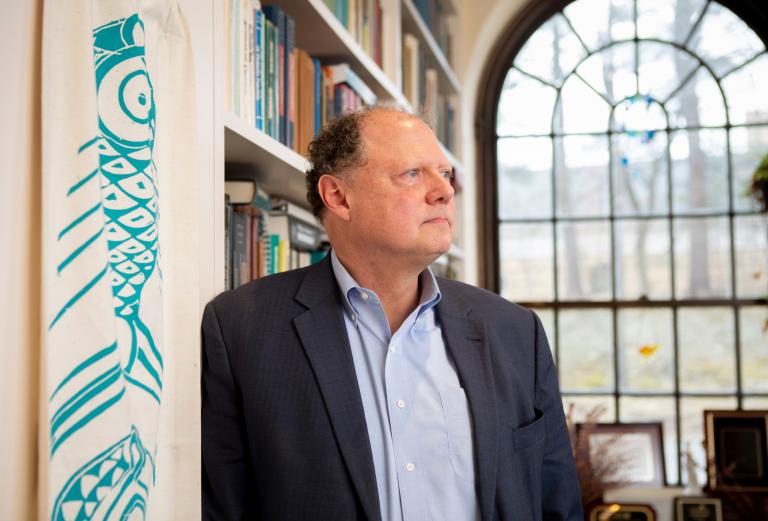The Connections Between Smell, Memory, and Health
The ability of odors to bring to mind past experiences has intriguing scientific and therapeutic implications
- 7 min read
- Feature

“What can you do with your nose?”
That’s the question psychologist Donald Laird posed in a 1935 paper — one of the first studies exploring links between odor and memory. Even as many of his contemporaries in sensory neurobiology were preoccupied with vision, and prominent scientists, including Darwin and Freud, had disparaged humans’ sense of smell, Laird, a Colgate University professor, argued that olfaction had been unduly dismissed. “Even our contemporary psychologists,” he wrote, “with dignified aplomb, casually pass by the sense of smell as something that is notable among animals but sadly deficient in mankind.”
Laird had an inkling that the human nose could do more than it got credit for, that it could even hold clues to the inner workings of memory. So he and colleagues asked 254 study participants to record moments in which smells spurred flashbacks to the past. They received hundreds of anecdotes, from a whiff of perfume reviving the discomfort of an awkward dance class to the smell of wool recalling a long-lost uncle’s overcoat. One participant, the son of a sawmill worker, reported that the smell of sawdust brought on “a series of vivid pictures so graphic that for the moment I live the scenes again.” The mere sight of sawdust, in contrast, fell flat.
The memories these passing odors evoked were remarkably intense, emotional, and deep-seated — more than just “casual will-o’-the-wisps in our mental fabric,” Laird wrote. The study’s insights provoked a bigger question about smell: “Can this be a sense which educators have overlooked,” he posited, “as an avenue into the mind?”
Fast-forward nearly a century, and scientists are making strides in understanding the connection Laird intuited — and even harnessing it to improve health. “It’s now clear that even though our sense of smell is not as robust as that of a mouse or bloodhound, it is deeply tied to our cognitive centers, our emotional centers, and our memory centers,” says Sandeep Robert Datta, a professor of neurobiology at Harvard Medical School. “We’re dependent on it for a sense of well-being and centeredness in the world.”
How smells trigger memories
Datta, whose HMS lab studies how animals use senses to understand the world around them, says that neuroscience has revealed the mechanisms behind odor’s power to spur memory — a power with evolutionary origins. Our ancient ancestors relied on smell to build maps of their surroundings and remember where they’d been. “You can think of the original brain as being a sense of smell plus a sense of navigation plus a sense of memory,” Datta says. “That explains why all those structures are so intimately connected, and why odor memories are so evocative.”

These connections persist in our physiology. The human nose houses hundreds of odor receptors, each primed to interact with specific subsets of odor molecules. When those molecules waft into the nose and bind to their matching receptors, Datta says, it’s “like a key being inserted into a lock,” and brain cells called olfactory sensory neurons fire electrical signals along axons to different parts of the brain.
The signals make a quick stop in the olfactory bulb before traveling to key areas of the brain involved in learning, emotion, and memory: the olfactory, or piriform cortex, which identifies smells; the amygdala, which is involved in generating emotion; and the hippocampus, which stores and organizes memories. If the hippocampus deems the smell important — if it were connected with a particularly emotional moment, for example — it can file the information and store it indefinitely. Even decades later, the same scent can bring the memory and emotional salience of the moment flooding back.
Sights, sounds, and other sensory information must first travel through the brain’s thalamus before reaching the amygdala and hippocampus. In contrast, the olfactory system is positioned right next to them, appearing to have “essentially evolved to hardwire information to these memory and emotion centers,” says Datta. This could explain why studies have found that, when compared with memories triggered by other senses, odor-evoked memories tend to be more emotional and more likely to extend back earlier in one’s life.
Olfaction and health
It’s no surprise that perfume makers, candle companies, and even retail chains capitalize on odor’s power to spur memory. But the potential implications extend into medicine too.
“Smell can instantly trigger an emotional response along with a memory, and our emotional states have a very strong effect on our physical well-being,” says Rachel Herz, a neuroscientist at Brown University who studies the psychological science of smell. In addition to citing myriad studies that link smell-induced memories to mood improvement and stress reduction, Herz points to research showing that smells evoking personal memories promote slower, deeper breathing than pleasant but more generic smells and linking odor-evoked memories to significant reductions in markers of inflammation.
These beneficial effects may explain why the loss of olfaction — a condition called anosmia — can be damaging to mental health. “If we are suddenly denied our sense of smell, we feel adrift and confused about where we are in a way we didn’t expect,” says Datta. “We’re constantly being reminded about where we’ve been and where we are through our sense of smell.”
Of course, not all smells evoke the feelings of well-being and centeredness Datta describes. If evolution has shaped the link between smell and memory, then odors don’t just tell us what’s good — they also alert us to what’s bad. “If someone has a smell that is linked to their trauma, that smell is almost certainly one of the most robust triggers for their trauma,” says Kerry Ressler, HMS professor of psychiatry and chief scientific officer at McLean Hospital. From the burning diesel fumes of a combat zone to an abuser’s cologne, invisible odors can arise without warning and quickly trigger an intense flashback or post-traumatic stress disorder episode.
Ressler, whose research in mice has explored the neurobiology of fear and anxiety, was drawn to the study of smell because of the intriguing opportunities it presents. Each olfactory receptor in the mammalian nose is linked to a specific gene, which scientists can manipulate to alter how the brain perceives smells — and even to induce the brain to form false odor memories. These direct links allow researchers to study how the brain responds to the environment, including traumatic experiences, and how these responses in the brain might be reversed during recovery from trauma.

In one study, Ressler and colleagues introduced certain smells to mice along with negative stimuli, such as a small shock to the foot. The mice’s behavior indicated that they developed not only a fear of or aversion to these smells, but also more neurons in the nose specifically linked to those odors, as well as larger glomeruli, clusters of nerve cells that transmit signals from odor molecules to the brain.
Ressler and colleagues wanted to understand whether these fears could be reversed through extinction — a method of exposure therapy in which a stimulus (in this case the odor) linked to a negative memory is presented again systematically without negative reinforcement. It appeared to work: The mice’s behavior indicated that they had learned the smells were safe, and their glomerular area and number of nose neurons returned to normal. “This suggests that the olfactory system is plastic for the environment the animal lives in, to be able to hold the odor memories in some sort of state of environmental importance,” Ressler says.
These findings could have implications for the treatment of PTSD in humans. Ressler says that there’s a need for larger studies of odor-exposure therapy, but researchers are beginning to experiment with it: A 2019 study, for example, found success in treating veterans with combat-related PTSD using a virtual reality exposure therapy that included the release of odors like diesel fuel. Ressler suggests that patients could also be trained to develop “safety memories” around a given smell, such as lavender, that could be used to quell feelings of anxiety or flashbacks when they arise.
Sniffing out memory’s secrets
Researchers are still unraveling the full extent to which smell can be, in Laird’s words, an “avenue into the mind.” For her part, Herz wonders whether the rarity of certain scents — the fact that we might smell something only once — could mean that there are memories buried in our brains, to be remembered only if the smell is encountered again. “You could have a piece of your past either forever forgotten or potentially newly remembered through scent alone,” she muses.
Others have wondered whether scents might help spur lost recollections in people with dementia, Alzheimer’s, and other conditions causing memory loss. While the concept of “reminiscence therapy” using smell is relatively new and untested, it’s already being used in some hospitals and care facilities. For example, Hebrew Home at Riverdale, a long-term care community in New York City, has offered residents kiosks with seasonally rotating smells that evoke a sense of nostalgia, such as the scents of baseball mitts and hot dogs.
Curiously, research also suggests that smell loss can be one of the first symptoms of Alzheimer’s disease. Mark Albers, HMS assistant professor of neurology, and colleagues at Massachusetts General Hospital have found that a reduced ability to identify scents could precede the development of the disease by several years, and that a smell test could be used to identify those at risk. “It’s unclear why the olfactory system is so sensitive to the disease process that causes Alzheimer’s,” says Datta, “but it also almost certainly relates to this intersection between smell and memory.”
“We’re all concerned with our memories and the decline in our memory as we age,” Datta adds. “One hope is that we can use smell memory to learn more about what goes awry during diseases like Alzheimer’s.” He explains that the interactions between the olfactory cortex and the hippocampus can serve as a model for processes that the brain uses when trying to remember things other than smells, and the circuits supporting smell look very similar, architecturally, to the circuits involved in memory. “Thinking about olfactory memory as a model for memory in general is really useful,” Datta says.
So, what can you do with your nose? Perhaps even more than Laird ever would have guessed.
Molly McDonough is the associate editor of Harvard Medicine magazine.
Images: Anna Olivella (Datta); John Soares (Ressler)
Animation: Rick Groleau
Continued funding uncertainty jeopardizes promising HMS research advances.